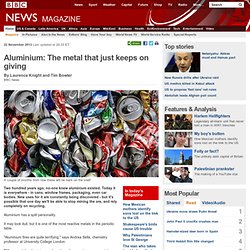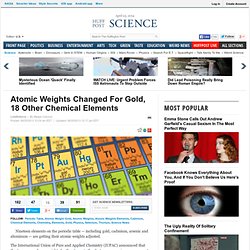

Y chromosome: Why men contribute so little. 21 November 2013Last updated at 21:14 ET By James Gallagher Health and science reporter, BBC News The father has hardly any Y chromosome Scientists have practically obliterated the ultimate symbol of maleness in DNA, the Y chromosome, and believe they may be able to do away with it completely.

They condensed all the genetic information normally found on a mouse's Y chromosome to just two genes. Their study, in the journal Science, showed the male mice could still father babies, albeit needing advanced IVF. The team in Hawaii argues that the findings could one day help infertile men with a damaged Y chromosome. DNA is bundled into chromosomes. In most mammals, including humans, one pair act as the sex chromosomes. Inherit an X and Y from your parents and you turn out male, get a pair of Xs and the result is female.
Two genes 'enough' A human X and Y chromosome "The Y chromosome is a symbol of maleness," lead researcher Professor Monika Ward told the BBC. Continue reading the main story. Aluminium: The metal that just keeps on giving. 22 November 2013Last updated at 20:33 ET By Laurence Knight and Tim Bowler BBC News A couple of months from now these will be back on the shelf Two hundred years ago, no-one knew aluminium existed.

Today it is everywhere - in cans, window frames, packaging, even car bodies. New uses for it are constantly being discovered - but it's possible that one day we'll be able to stop mining the ore, and rely completely on recycling. Aluminium has a split personality. It may look dull, but it is one of the most reactive metals in the periodic table. "Aluminium fires are quite terrifying," says Andrea Sella, chemistry professor at University College London. Where is the next generation of coders? 12 November 2013Last updated at 19:00 ET By Jane Wakefield Technology reporter A robot controlled by a tablet, which can turn its head 360 degrees, has been developed These days coders are as in demand as supermodels were in the 1980s.

From banks to hospitals to local government, everyone wants a techie on their team. But just as more and more jobs rely on computing and coding, so conversely fewer people have the skills to fill them. To head off a global coding crisis, something needs to be done to persuade youngsters that there is more to coding than dark rooms, pizzas and unsociable hours. Robot friends. BBC Science - The periodic table: how elements get their names. 14 November 2013Last updated at 09:08 By Christopher Brooks BBC Scotland Most people could name many of the elements, but how many of us know how they got those names?
Each of the 115 known chemical elements was discovered over the last few thousand years, from before recorded history began to the nuclear laboratories of the 21st century. Their chosen names were influenced by an ever changing mix of language, culture and our understanding of chemistry. Nasa Concept Video Imagines Mars As It Was 4 Billion Years Ago. Ancient Fish Fossil Discovered Has World's Oldest Recognizable Face From 419 Million Years Ago. A newly discovered fish fossil is the earliest known creature with what might be recognized as a face.

Entelognathus primordialiswas an ancient fish that lived about 419 million years ago in the Late Silurian seas of China. Cambrian Explosion: Evolutionary Big Bang Was Sparked By Multiple Events, Scientists Say. The Cambrian explosion, the evolutionary "big bang" that led to the emergence of a trove of complex life forms, was caused by multiple events, researchers argue.

Genetic changes allowing for complex body plans combined with rising sea levels and an influx of chemicals into the ocean probably created the unique conditions needed to set off the Cambrian explosion, researchers argue in a perspectives paper published today (Sept. 19) in the journal Science. "There was this cascade of events," said study co-author Paul Smith, a paleobiologist at the University of Oxford's Museum of Natural History. Atomic Weights Changed For Gold, 18 Other Chemical Elements. Nineteen elements on the periodic table — including gold, cadmium, arsenic and aluminum — are getting their atomic weights adjusted.

The International Union of Pure and Applied Chemistry (IUPAC) announced that they've approved new weights for the elements thanks to more precise measurements and better calculations of the abundance of certain isotopes (atoms of an element with different numbers of neutrons). The standard atomic weight is the average mass of an element in atomic mass units. One atomic mass unit, or amu, is equal to 1/12 the mass of a single carbon-12 atom. (To put that in perspective, a single carbon atom is roughly equal to 5.857 × 10^-26 ounces.) To calculate standard atomic weight for an element, scientists average the atomic weights of all its stable isotopes. Bead-Chain VIDEO Uses Slo-Mo To Show How Falling Beads Seem To Float. Watching a strand of beads fall from a jar in slow-motion is not only pretty mesmerizing, but is also phenomenal physics.

Just check out this amazing bead-chain experiment in the Earth Unplugged Youtube video above. The video shows that when one end of a strand of beads is tossed into the air, the beads form a strange arc that seems to levitate.